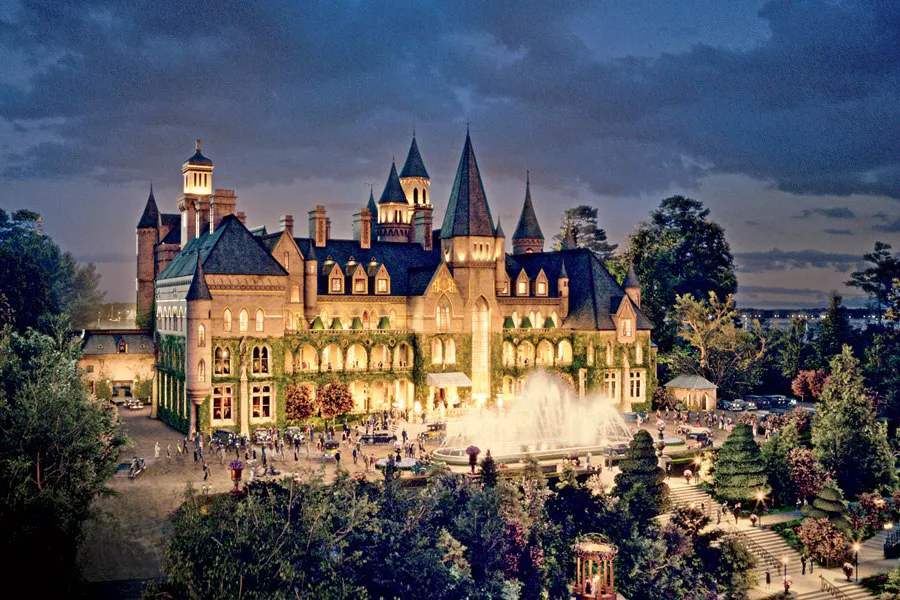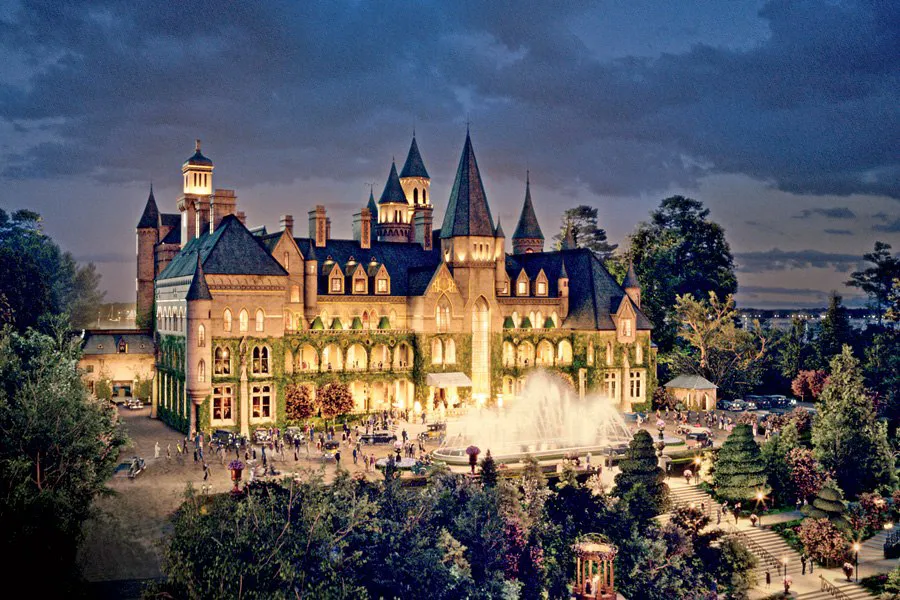
Being an architecture major I was curious with how my major could tie into the Great Gatsby and it was obvious Fitzgerald had a way of depth to his timeless story with architecture. I believe that what makes this a timeless story is the attention to detail, and the gray areas that leave a lot up to reader speculation.
The [house] on my right was a colossal affair by any standard–it was a factual imitation of some Hôtel de Ville in Normandy, with a tower on one side, spanking new under a thin beard of raw ivy, and a marble swimming pool and more than forty acres of lawn and garden. (Nick)
Understanding why Fitzgerald made Gatsby’s house such a grand building allows us to understand more of Gatsby’s character. This house on the outside appears magnificent and it never has to ask for attention, its mere beauty attracts it. Now while the building itself was beautiful I felt as if it were a shell as I was reading the novel, the building itself has nothing that screams home. The house feels empty even when it’s filled with extravagant dancers and loud live music and Gatsby saw it that way too. The house would always be empty to him without Daisy, but not only the house but Gatsby too. The houses one purpose was to attract the one thing he thought would fill it and in turn fulfil Gatsby as well.
This can be seen throughout the story and how Gatsby’s house seems progressively less extravagant as he meets and learns more about Daisy. As his want to attract her fades as he learns more about her but more importantly who she is and how she feels the house also fades. Towards the end of the novel before his death, you can see how blank and lost Gatsby feels as a character as he is staring at the sky from his pool, and his house reciprocates that bleakness by the lack of parties and guests. Gatsby’s house died long before he did.

Leave a Reply